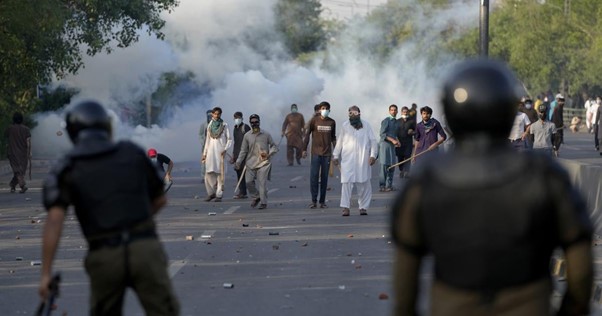Are PSEs Burdensome on Economy?
Sun, 26 Dec 2021 | Reading Time: 4 minutes
State-owned firms i.e. Public Sector Undertakings (PSUs) were founded during 1960-70 when India’s needs and national priorities were different in her economy. Also 14 banks were nationalized in 1969 followed by 6 in 1980 that contributed the success story of India’s self-sufficiency in food grains products and promoted Financial Inclusion since 2005 by RBI. Those policies were perhaps right 50-60 years back. Does it need improvement in today’s changed circumstances? Many opined that the focus is to reform pubic money to put its best use. But there are Public Sector Enterprises (PSEs) that are loss making and survive only on support by taxpayers’ money. The money which is the right of the poor, right of youth is spent on these PSEs carrying burdensome on the economy.
With the trend of privatisation across the world, India had to introduce privatisation amid hue and cry from political and social groups as public demands more for qualitative and fast service for which PSUs are unable to provide. While Jio went with their 5G trials, BSNL is still planning to launch 4G network. Following Economic Liberation and Infrastructure based Development, India is facing fiscal deficit and rising cost of expenditure. To help raise the necessary capital, government started privatizing PSUs for accelerating technological progress.
However, major disinvestment took place during NDA by Vajpayee Government between 1999 and 2004 such as Modern Foods, Maruti Udyog, BALCO, CMC, Hindustan Teleprinter, Hindustan Zinc, IPCL, Jessop and Co, Lagan Jute Machinery, Paradeep Phosphates and VSNL. Govt’s stake sold out one after another. The UPA led by Manmohan Singh had not done any privatisation in its 10-year rule. But PM Modi is looking forward to carry the legacy of Vajpayee. Covid-19 crisis threw the entire economy into disarray. In order to wasteful administrative costs with the impact of health expenditure, government started privatizing, merging or consolidating PSUs.
The Government has plans to privatize PSUs, where they will retain a bare minimum presence for strategic sectors. FM has made strongest pitch for disinvestment of loss-making PSUs to modernize and monetize in the Budget saying several loss-making PSUs are supported by taxpayers which otherwise should have gone into welfare schemes in areas like water, sanitation, education and healthcare.
Should government own and run enterprises when private sector brings in investment, global best practices, top-quality managers, changes in management and modernization? The largest disinvestment drive ever by the NDA is set to sell its entire stake from BPCL, Shipping Corporation, Container Corporation, HLL Lifecare. Also 6 still plants including Neelachal, Durgapur, Salem and Rashtriya Ispat Nigam are listed. Also a lot of under-utilised and unutilised assets in oil and gas and power needed huge investment.
Government wants its banks to be scaled up or bigger like SBI to meet the aspirational needs by reducing the number of Public Sector Banks (PSBs). NITI Aayog recommends names of 2 PSU banks such as IOB and Central Bank to be privatized along with United India Insurance Company in the FY as part of the disinvestment process. Also they’re eying IDBI and LIC to seek reforms for ensuring public funds efficiently. 111 lakh crore national infrastructure pipelines is planned to pull the economy out of the pandemic-induced slump to meet its commitments. The easiest path it has chosen for disinvestment of PSUs. Air India successful deal to TATA for 18,000 Crore has signaled Government to go ahead.
9 lakhs of bank employees have been protesting against the Banking Amendments Bill 2021. This move will bring down the minimum government holding in the PSBs from 51% to 26%. Privatization of PSBs is going to be a part of the disinvestment drive to earn Rs. 1.75 lakh crore for the government. Privatization process will lead to many other banks in the future, rather than 2 now. Privatisation may create monopoly while the interests of workers and welfare are raised. The bottom-line is different what government is saying about PSBs to ensure better efficiency whereas PSBs are doing well and earning substantial profit despite NPAs.
The reasons for the rise in NPAs are laid with macroeconomic factors. When the economy was booming, business confidence was buoyant. The growth stagnated after the global financial crisis 2008 and the repayment capacity of borrowers declined, where banking sectors and the corporates are reeling under financial stress. Also crony capitalism has caused high NPAs. Further high profile fraudsters managed high magnitude frauds. After all the issues of huge NPAs lied for big corporate that dragged banks into crisis. Government policies of waiving agriculture loans in cases of floods, droughts and natural calamities burden PSBs. Interestingly marginal farmers and small entrepreneurs pay loans in due time.
RBI asked banks to do provisioning, buffers and raise capital. Under provisioning, banks have to set aside funds to a prescribed percentage of bad assets. They have written off a massive loans amount double than the capital infused by the government. Bank recapitalization bonds are issued to increase the capital infusion into banks to maintain capital adequacy ratio. SARFAESI Act is another avenue of NPA resolution to empower banks to sell off the pledged collateral while facing difficult and time consuming civil courts. Now bad loans have been resolved through Insolvency and Bankruptcy codes with DRTs and NCLT at enormous loss. Gross NPA of PSBs declined as a result of strategy of recognition, resolution, recapitalization and reforms at the cost of operating profit thereby drowns bank’s net profits.
Government implements various Yojnas for the under privileged section through PSBs. PSBs are the lifeline of the economy and government should nourish them for sustainability. PSBs provide equality of opportunities to access financial services including banking, loan, equity, insurance products. Mergers of banks or privatisation are not the only tool for economic growth. The government should recapitalize weak banks for survival or government continue its shareholding of more than 50% through disinvestment instead of privatisation (less than 50% or nil stake) initiative of week PSBs. Time will tell whether government made the right decision on banking sectors.
Disclaimer
The opinions expressed in this article are the author’s own and do not reflect the views of Chanakya Forum. All information provided in this article including timeliness, completeness, accuracy, suitability or validity of information referenced therein, is the sole responsibility of the author. www.chanakyaforum.com does not assume any responsibility for the same.
Chanakya Forum is now on . Click here to join our channel (@ChanakyaForum) and stay updated with the latest headlines and articles.
Important
We work round the clock to bring you the finest articles and updates from around the world. There is a team that works tirelessly to ensure that you have a seamless reading experience. But all this costs money. Please support us so that we keep doing what we do best. Happy Reading
Support Us




















POST COMMENTS (0)